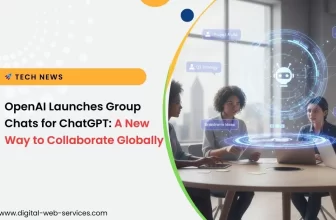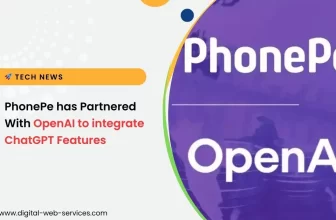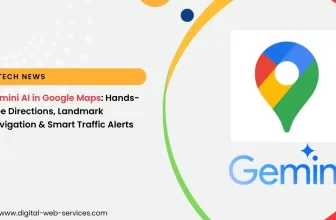
In a significant stride towards democratizing web analytics, Microsoft Clarity recently unveiled its Model Context Protocol (MCP) server, enabling users to access website data through natural language queries via AI. Announced on June 4, 2025, this groundbreaking development marks a pivotal moment, transforming how developers, marketers, and SEO professionals interact with complex analytics data. Gone are the days of intricate database queries and specialized filtering; now, a simple question to an AI assistant can unlock profound insights into user behavior.
The Power of Natural Language Queries
The core innovation lies in Clarity’s ability to understand and process natural language. Imagine asking your analytics platform: “Show me last week’s engagement time by country,” or “What are the most common rage clicks on our checkout page for mobile users?” The MCP server acts as an intelligent intermediary, translating these conversational commands into structured API calls that retrieve and present the relevant data. This “smart bridge” standardizes how AI systems connect to diverse data sources, making sophisticated web metrics accessible to a much wider audience.
Benefits of AI-Powered Analytics in Clarity
The integration of AI and natural language processing into Microsoft Clarity offers a multitude of benefits:
- Democratized Data Access: Previously, deep dives into web analytics often required specialized technical skills. Natural language queries break down this barrier, allowing marketing managers, content creators, business analysts, and even executives to independently generate sophisticated insights.
- Faster and More Efficient Insights: Instead of manually sifting through dashboards or setting up complex filters, users can get immediate answers to their questions, accelerating the data analysis process and enabling quicker, more agile decision-making.
- Enhanced Decision-Making: With simplified access to critical data points like scroll depth, engagement time, traffic volume, and user behavior patterns across various dimensions (browser type, OS, geographic region, device category), businesses can make more informed decisions about website optimization, content strategy, and user experience.
- Reduced Manual Effort: AI automates repetitive and time-consuming tasks associated with data extraction and analysis, freeing up valuable human resources to focus on higher-value activities such as strategic planning and innovation.
- Deeper Understanding of User Behavior: Beyond surface-level metrics, natural language queries can uncover hidden patterns, trends, and correlations that might be difficult to identify through traditional methods, leading to a more nuanced understanding of user journeys and pain points.
- Proactive Problem Solving: By quickly identifying issues like low engagement on specific pages or high bounce rates from certain traffic sources, teams can proactively address problems before they significantly impact conversions or user satisfaction.
How to Use Natural Language Access in Microsoft Clarity
While the exact interface and integration with third-party AI assistants like Claude will evolve, the general workflow for leveraging natural language queries in Microsoft Clarity involves:
- Ensure Clarity Setup: Your website must have the Microsoft Clarity tracking code properly installed and configured to collect data.
- Access AI Assistant: You’ll interact with an AI assistant that has been integrated with the Clarity MCP server. This could be a direct integration within the Clarity dashboard (like Clarity Copilot) or through external tools like Claude for Desktop.
- Pose Your Question: Simply type your question in natural language. Be as specific as possible to get the most accurate results.
- Examples of queries you can use:
- “What was the average engagement time on our product pages last month?”
- “Show me the scroll depth for mobile users on our homepage during the last 7 days.”
- “Compare traffic volume from organic search versus paid ads for the past quarter.”
- “Identify pages with high rage clicks from users in Delhi.”
- “Summarize user behavior on our contact us page.”
- Examples of queries you can use:
- Review the AI’s Response: The AI assistant will process your request and present the relevant data, often in a summarized format or a table, with links to the corresponding Clarity dashboards, session recordings, or heatmaps for deeper investigation.
- Iterate and Refine: If the initial response isn’t exactly what you need, refine your question, providing more context or specific parameters.
Beyond Natural Language: Other AI Features in Microsoft Clarity
Microsoft Clarity’s AI capabilities extend beyond just natural language querying, offering a comprehensive suite of tools to understand user behavior:
- Clarity Copilot: This built-in AI assistant provides AI-generated summaries of session recordings, highlights key events, identifies friction points, and offers optimization tips, saving hours of manual review. It also summarizes heatmaps across different device types.
- Session Insights & Grouped Session Insights: These features use generative AI to distill key learnings from individual or multiple user sessions, presenting them in plain language.
- Heatmap Insights: AI quickly summarizes click, scroll, and move heatmaps across different devices for a specific page, helping to uncover trends and user behaviors efficiently.
- Predictive Heatmaps: A revolutionary feature that leverages AI and machine learning to forecast user interactions on your website even before real users interact with it. By providing an image or URL, you can get a glimpse into where users are likely to click, scroll, and spend their time, allowing for proactive design improvements and optimization.
FAQs about Microsoft Clarity’s Natural Language AI
Q: Is Microsoft Clarity’s natural language access truly free?
A: Yes, Microsoft Clarity itself is a free tool. The natural language access via the MCP server is also part of Clarity’s free offering, aiming to make analytics more accessible without additional costs.
Q: What kind of data can I query using natural language?
A: You can query various metrics including scroll depth, engagement time, traffic volume data, and user behavior patterns. You can also filter this data across dimensions like browser type, operating system, geographic region, and device category.
Q: Which AI assistants are compatible with Microsoft Clarity’s MCP server?
A: The initial announcement highlights compatibility with AI assistants like Claude for Desktop. Microsoft’s roadmap suggests an expanding ecosystem supporting additional AI agents and MCP servers in the future.
Q: Do I need coding knowledge to use this feature?
A: No, that’s the primary benefit! The natural language interface is designed to eliminate the need for coding or complex database queries, allowing anyone to gain insights by asking questions in plain English.
Q: How accurate are the AI-generated insights? A
A: While AI models are powerful, it’s important to remember they can sometimes misinterpret or generate incorrect information. Microsoft encourages users to provide feedback (e.g., using thumbs up/down buttons) if they notice any inaccuracies, helping to continuously improve the models.
Q: Does this replace traditional analytics dashboards?
A: Not entirely. Natural language access significantly simplifies data retrieval and initial analysis. However, traditional dashboards and tools within Clarity (like detailed session recordings and heatmap views) remain crucial for deeper investigation, visualization, and validating AI-generated insights. It acts as a powerful complement, not a complete replacement.
Q: How does this impact data privacy?
A: Microsoft Clarity is designed with privacy in mind, adhering to regulations like GDPR and CCPA. The natural language querying system operates within these existing privacy frameworks, ensuring user data remains anonymized and protected.
Conclusion
Microsoft Clarity’s introduction of natural language access to analytics via its AI-powered MCP server is a game-changer for digital professionals. By transforming complex data into easily understandable insights through conversational queries, it empowers a wider range of users to leverage web analytics effectively. Combined with its existing suite of AI features like Copilot and Predictive Heatmaps, Clarity continues to solidify its position as an indispensable and accessible tool for optimizing online experiences and driving data-driven growth.
| Also Read: Google Claims that AI Overviews Monetize at the Same Rate as Traditional Search Results
You can follow us on Google News for more interesting, latest news and updates
Digital Web Services (DWS) is a leading IT company specializing in Software Development, Web Application Development, Website Designing, and Digital Marketing. Here are providing all kinds of services and solutions for the digital transformation of any business and website.











